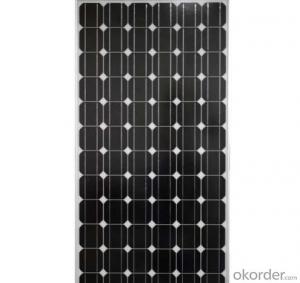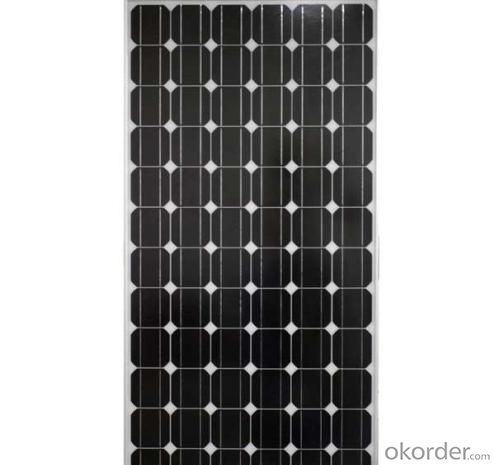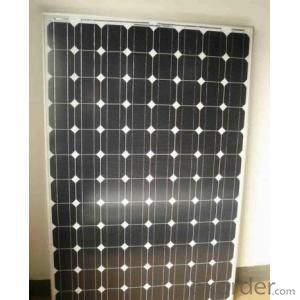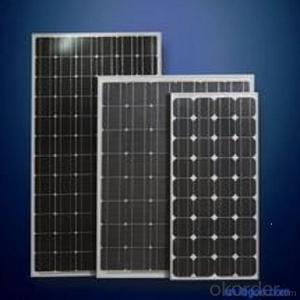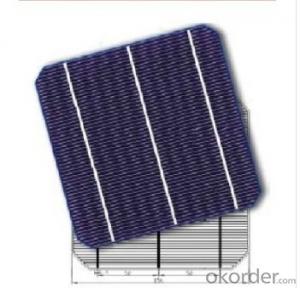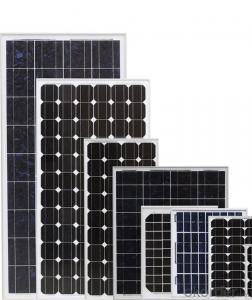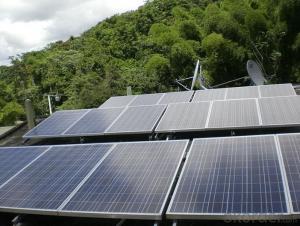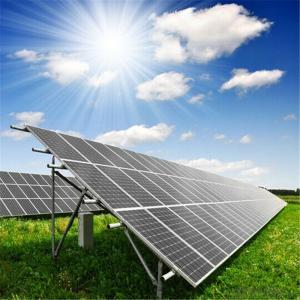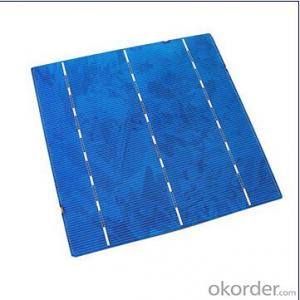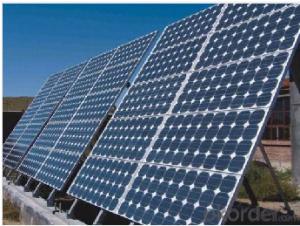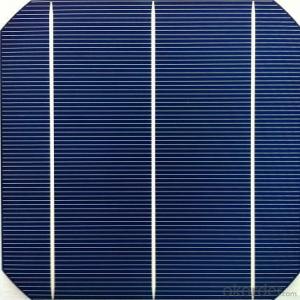Solar Cells Inc 260w Solar Panel for 35kw Solar Home Solution with 25 Years Quality Assurance
- Loading Port:
- Shanghai
- Payment Terms:
- TT OR LC
- Min Order Qty:
- 26 pc
- Supply Capability:
- 5000 pc/month
OKorder Service Pledge
OKorder Financial Service
You Might Also Like
Specification
156x156mm 3BB Poly Solar Cells 6x6 with Sperior Quality for Solar Panel
Production description
A photovoltaic system, also solar PV power system, or PV system, is a power system designed to supply usable solar power by means ofphotovoltaics. It consists of an arrangement of several components, including solar panels to absorb and convert sunlight into electricity, a solar inverter to change the electric current from DC to AC, as well as mounting, cabling and other electrical accessories to set up a working system. It may also use a solar tracking system to improve the system's overall performance and include anintegrated battery solution, as prices for storage devices are expected to decline.
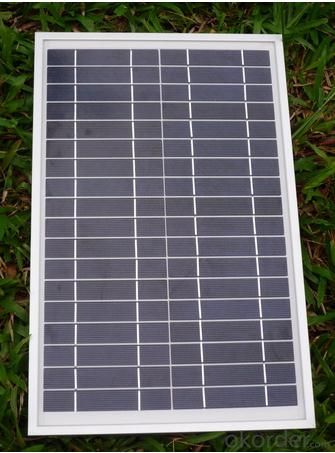
Feature
1.High conversion efficiencies resulting in superior power output performance.
2.Outstanding power output even in low light or high temperature conditions
3.Optimized design for ease of soldering and lamination
4.Long-term stability,reliability and performance
5.Low breakage rate
6.Color uniformaity
Physical characteristic
1. Rigorous quality control meets the highest international standards.
2. High-transmissivity low-iron tempered glass, strong aluminium frame.
3. Using UV-resistant silicon.
4. IS09001/14001/CE/TUV/UL
- Q: How do solar cells perform in areas with high levels of vibration?
- Solar cells are generally not affected by high levels of vibration as they are solid-state devices with no moving parts. Their performance remains unaffected, unless the vibration is severe enough to physically damage the solar panel or disrupt its alignment with the sun.
- Q: Can solar cells be used in remote or inaccessible locations?
- Yes, solar cells can be used in remote or inaccessible locations. Solar cells are a reliable and sustainable source of energy that can be installed in areas with limited infrastructure or access to the grid. They are often used to power remote buildings, off-grid communities, and even in space missions. The portability and versatility of solar panels make them an ideal solution for providing electricity in remote or inaccessible locations.
- Q: What is a polycrystalline solar cell?
- A polycrystalline solar cell is a type of solar cell made from multiple crystal structures, resulting in a grainy appearance. It is less expensive to produce compared to monocrystalline cells, but typically has lower efficiency levels.
- Q: Can solar cells be used in theme parks or amusement parks?
- Yes, solar cells can definitely be used in theme parks or amusement parks. Solar cells can be installed on rooftops, parking lots, and other open spaces within these parks to generate clean and renewable energy. This energy can be utilized to power rides, lighting systems, water features, and other facilities within the park, reducing reliance on traditional power sources and lowering carbon emissions. Moreover, solar panels can also serve as educational tools, allowing park visitors to learn about renewable energy and sustainability.
- Q: What is the maintenance required for solar cells?
- The maintenance required for solar cells primarily involves regular cleaning to remove any dirt, debris, or grime that may accumulate on the surface of the panels. Additionally, it is important to inspect the panels for any damage, such as cracks or loose connections, and address them promptly to ensure optimal performance. Other routine maintenance tasks include checking the inverters, monitoring the system's performance, and keeping the surrounding area free from shading objects. Overall, solar cell maintenance is relatively minimal compared to other energy sources, making it a cost-effective and sustainable choice for power generation.
- Q: Can solar cells be used for powering hospitals?
- Yes, solar cells can be used for powering hospitals. Solar energy can be harnessed through solar panels, which convert sunlight into electricity. Hospitals can install solar panels on their rooftops or in nearby areas to generate clean and renewable energy. This can help reduce their dependence on traditional electricity sources, lower energy costs, and ensure a more sustainable and reliable power supply, especially in areas with frequent power outages or limited access to electricity grids. Additionally, solar power can also be used to charge backup batteries, providing a continuous power supply during emergencies or when there is a shortage of sunlight.
- Q: How do solar cells handle power quality issues?
- Solar cells do not directly handle power quality issues. However, inverters are used in solar power systems to convert the direct current (DC) generated by solar cells into alternating current (AC) that can be used in homes and businesses. These inverters often have built-in features to address power quality issues such as voltage fluctuations, harmonic distortions, and frequency variations. Additionally, grid-tied solar systems can rely on the electrical grid itself to handle power quality issues, as any excess power generated by solar cells can be fed back into the grid, ensuring a stable and reliable power supply.
- Q: Can solar cells be used for off-grid power systems?
- Yes, solar cells can be used for off-grid power systems. Solar cells convert sunlight directly into electricity, allowing them to generate power in remote locations or areas without access to the traditional power grid. They are particularly well-suited for off-grid power systems as they are reliable, renewable, and require minimal maintenance. Additionally, advancements in battery storage technology have made it possible to store excess energy generated by solar cells for use during periods of low or no sunlight, further enhancing their suitability for off-grid applications.
- Q: Whether the solar cell is light can produce electricity
- Photoelectric effect of the work of thin film solar cells as the mainstream, and the implementation of photochemical effects of solar cells is still in the embryonic stage.
- Q: How do solar cells impact energy consumption patterns?
- Solar cells impact energy consumption patterns by providing a renewable and clean source of electricity. They reduce reliance on traditional fossil fuels, decrease greenhouse gas emissions, and promote sustainable energy practices. Solar cells enable individuals, businesses, and communities to generate their own power, leading to a more decentralized and resilient energy system. Additionally, solar energy contributes to a more balanced and diversified energy mix, reducing the strain on conventional power grids and enhancing energy security.
Send your message to us
Solar Cells Inc 260w Solar Panel for 35kw Solar Home Solution with 25 Years Quality Assurance
- Loading Port:
- Shanghai
- Payment Terms:
- TT OR LC
- Min Order Qty:
- 26 pc
- Supply Capability:
- 5000 pc/month
OKorder Service Pledge
OKorder Financial Service
Similar products
Hot products
Hot Searches
Related keywords
